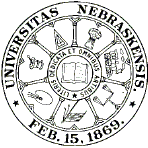
University Studies (University of Nebraska) (1888–1984)
Date of this Version
10-1-1914
Abstract
"Poetry in general," says Aristotle, "seems to have sprung from two causes, each of them lying deep in our nature-first, the instinct of imitation ..., next, ... the instinct for 'harmony' and 'rhythm.'" Many of the lyric-legend-dance complexes of certain North American Indian religious ceremonials would seem to bear out this judgment. Indeed, in not a few of the unmistakably poetic expressions, there may be found well-defined dramatic elements suggesting the possibility of a developed, independent dramatic literature, had these savage peoples been left alone to initiate a civilization and culture of their own. The South American Indians were capable of evolving a secular form of drama, as Sir Clements Markham affirms on the strength of the romantic "Ollantay" of the Incas of Peru. Certainly the North American Indians, many of whom were superior in religious conceptions and practices to their more civilized kindred of the south, could have equaled if not surpassed them in the matter of dramatic expression. For the peoples of the north, the idea of religion, of genuine worship, still lay at the root of all dramatic production. Hence, out of the great admixture of savage love of song, of story, and of rhythm, heightened by religious terrors and spiritual yearnings, must be sifted the mimetic actions and speeches fundamental to the drama proper, especially to serious drama; for to the savage mind, Nature, in one conception or another, the great dispenser of the necessities as well as of the "good things" of life, is a matter of deadly earnest.


Comments
Published in UNIVERSITY STUDIES, vol XIV, no. 4 (October 1914), pp.377-415. Published by the University of Nebraska.